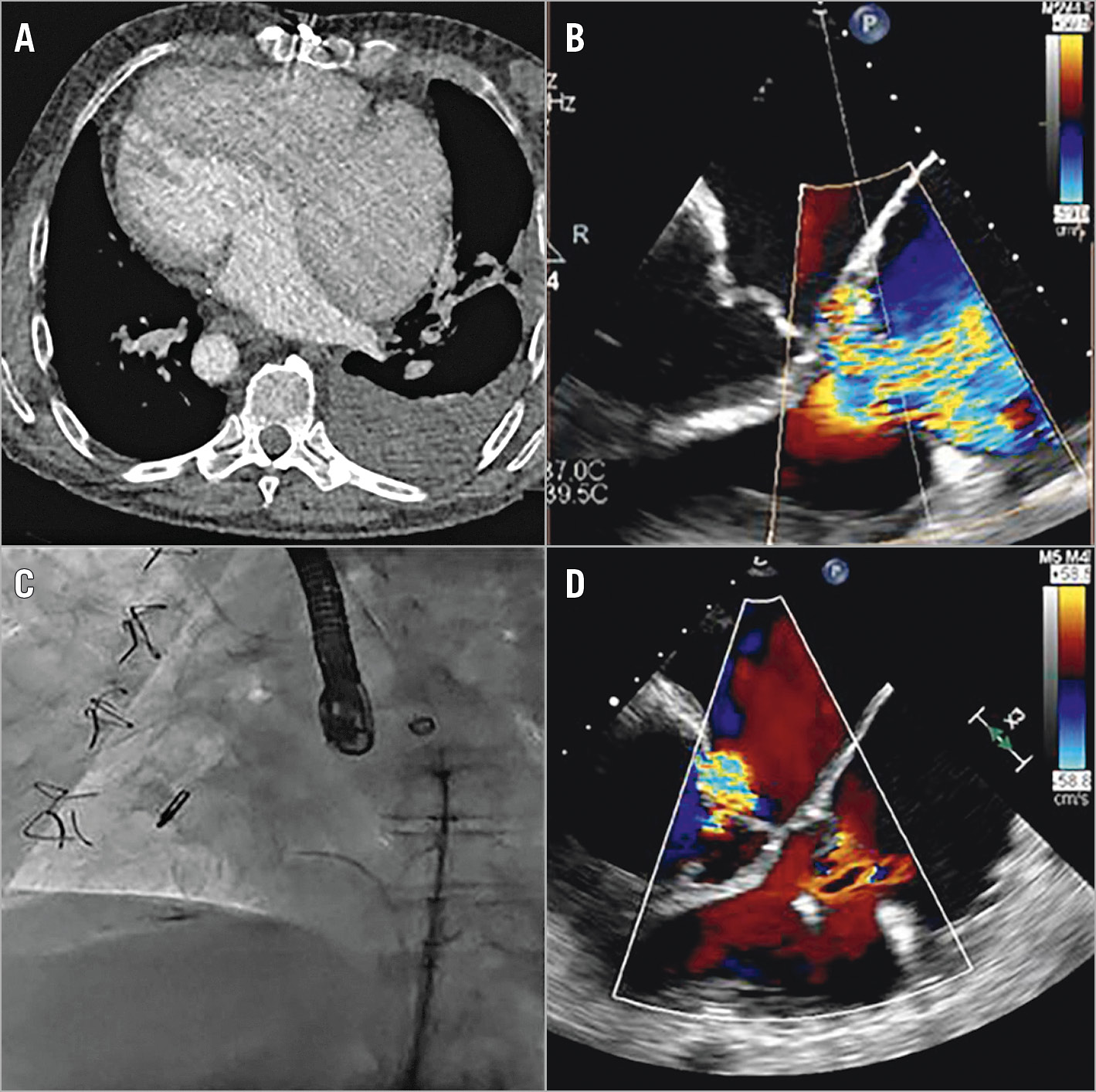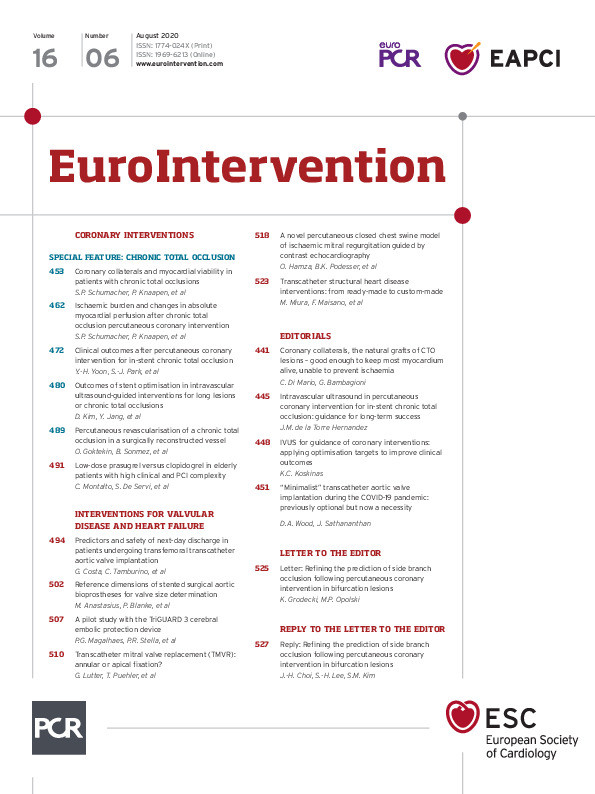Cory:
Unlock Your AI Assistant Now!


Figure 1. Computed tomography, transoesophageal echocardiography, and fluoroscopy. A) Computed tomography revealing heterotaxy. B) Preprocedural transoesophageal echocardiography revealed severe regurgitation of an anatomically mitral valve. C) A MitraClip XTR was deployed in the middle of the mitral leaflets. D) Post-procedural transoesophageal echocardiography revealed improvement of regurgitation from severe to trivial.
Transcatheter mitral valve repair (TMVR) using the MitraClip® system (Abbott Vascular, Santa Clara, CA, USA) has emerged as an alternative treatment for patients with severe symptomatic mitral regurgitation (MR) who are considered inoperable or at high surgical risk. TMVR is rapidly extending to more complex anatomies. Here, we present the case of a patient with severe symptomatic MR who was also suffering from congenitally corrected transposition of the great arteries (ccTGA) (Supplementary Appendix 1).
A 71-year-old male patient presented with dyspnoea NYHA Class IV and liver cirrhosis. He had ccTGA with heterotaxy (Figure 1A). He had undergone surgical resection of a left ventricular outflow obstruction, and closure of atrial and ventricular septal defects thirteen years previously. Transoesophageal echocardiography revealed severe regurgitation of an anatomically mitral valve with systolic anterior movement (Figure 1B, Moving image 1, Moving image 2). After Heart Team evaluation, the patient was considered eligible for TMVR using the MitraClip. A MitraClip XTR was deployed in the middle of the mitral leaflets (Figure 1C), resulting in a reduction of MR from severe to trivial (Figure 1D, Moving image 3). Unfortunately, he died due to progression of renal failure a few weeks after the procedure.
In terms of the technical aspects, the steerable guide catheter should be upside-down for adapting the heterotaxy. Moreover, it is difficult to get clear images due to complex anatomy and post-heart surgery.
In the current era of transcatheter intervention, TMVR has been maturing. The challenges in terms of the anatomy are not only the mitral valve but also the complexity of the heart itself. The indication for transcatheter structural heart disease intervention will expand from ready-made to custom-made therapy.
Conflict of interest statement
M. Miura is a consultant for Japan Lifeline. M. Taramasso is a consultant for Abbott Vascular, Boston Scientific, 4Tech, and CoreMedic, and has received speaker honoraria from Edwards Lifesciences. M. Zuber is a consultant for Abbott and Edwards Lifesciences. F. Maisano receives grant and/or research support from Abbott, Medtronic, Edwards Lifesciences, Biotronik, Boston Scientific Corporation, NVT, and Terumo, and consulting fees/honoraria from Abbott, Medtronic, Edwards Lifesciences, SwissVortex, Perifect, Xeltis, Transseptal Solutions, Cardiovalve and Magenta Medical (royalty income/IP rights), and is a shareholder in Cardiovalve, CardioGard, Magenta, SwissVortex, Transseptal Solutions, Occlufit, 4Tech, and Perifect.
Supplementary data
To read the full content of this article, please download the PDF.
Moving image 1. Transoesophageal echocardiography showing severe regurgitation of an anatomically mitral valve with systolic anterior movement.
Moving image 2. Transoesophageal echocardiography showing severe regurgitation of an anatomically mitral valve with systolic anterior movement.
Moving image 3. Transoesophageal echocardiography showing reduction of MR from severe to trivial after MitraClip implantation.

